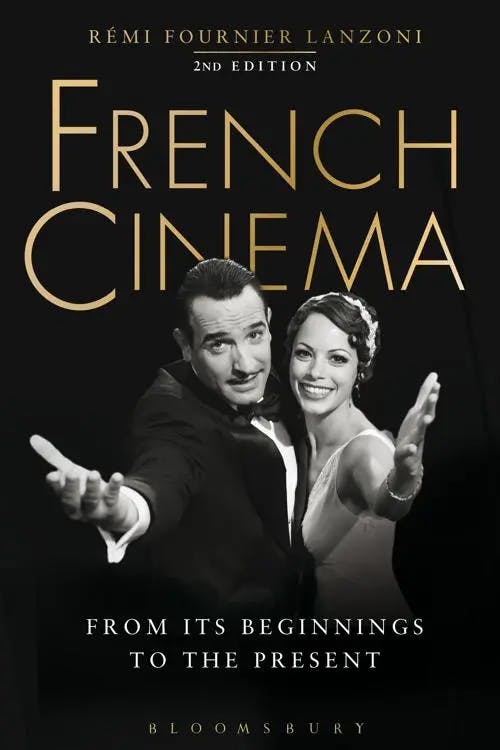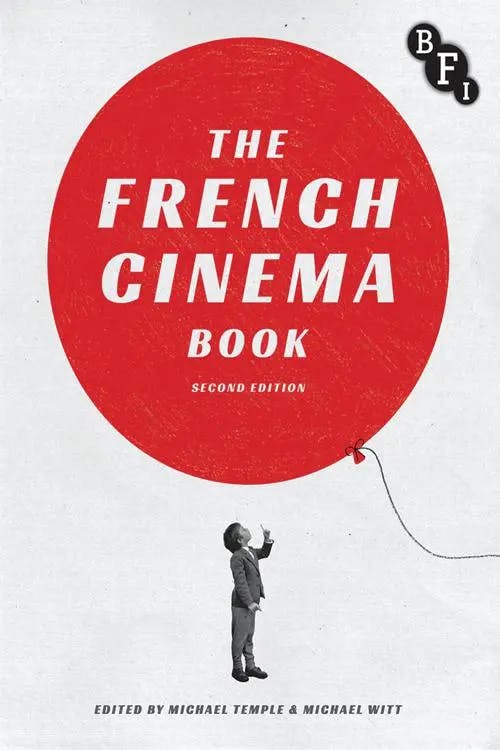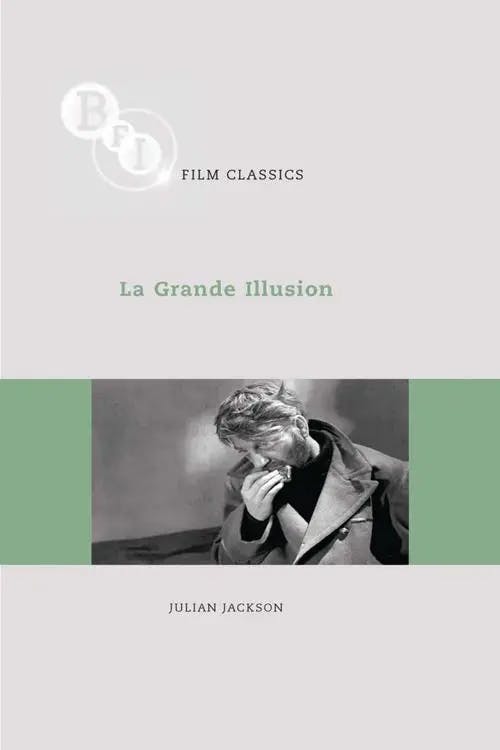What is Poetic Realism?
PhD, Media Arts (Royal Holloway, University of London)
Date Published: 05.07.2023,
Last Updated: 20.07.2023
Share this article
The development of poetic realism
Poetic realism was an important development in French cinema that took place in the 1930s. Rather than led by a vanguard of young thinkers, sharing ideas and writing manifestos in coffee shops and bars like the French New Wave, poetic realism grew naturally and simultaneously, more of a cinematic evolution than a ground-breaking movement. Because of this, it can be a difficult filmic development to reduce to a set of tropes. Much of poetic realist cinema would seem to modern audiences to be neither experimental or stylized, nor particularly ‘realist’. This tension between poeticism and realism, and the different ways that films addressed this synthesis, makes the movement particularly elusive. The following guide will explain the historical context, key features, influences and stylistic legacy of poetic realism.
1927 witnessed the first ‘talkie’ – a film with a recorded, synchronized soundtrack that saw characters speak without the use of intertitles. With the end of the silent era came more script-driven films with a surge of theatrical adaptations. These adaptations – known pejoratively as ‘canned theatre’ - were frowned upon by avant-gardists and film purists alike for their perceived frivolous nature and escapist subject matter. The rise of cinematic comedies and musicals, despite their commercial popularity, provoked concern that the cinematic image had become secondary to sound rather than supplemented by it. Along with the tendency towards sound-dominated cinema, productions saw the rise of new celebrity; performance now seemed more important than it had been in the silent era, with the talent of actors in full view.
As the 1930s progressed, however, this flamboyant popular cinema was accompanied by a new filmic practice. It quickly became clear that the birth of sound cinema also offered new possibilities to more accurately and smoothly represent “real-life”. In silent film the action was constantly interrupted by intertitles and the performances and storytelling more exaggerated to accommodate the lack of spoken exposition. With sound cinema, the flow and performances could be more naturalistic. But the reality that poetic realism sought to depict was fraught with political turmoil and economic crisis. By 1932, the great depression had hit France and conflicts between the left and right were bubbling. As Rémi Fournier Lanzoni accounts in French Cinema,
Poetic realism capitalized on the possibilities brought about by sound technology, but foremostly focussed on the representation of these fraught political conditions.
In The French Cinema Book, Charles O’Brien’s chapter “Plant, Imported Technologies and Film Style” outlines the shift from theatrical adaptations to poetic realism, asserting,
This outlines the profound effect that poetic realism had on cinematic movements to come.
Poetic realism aspired to a cinema that more closely represented real life. Free from the restraints of silent film and working against the gratuitous style of ‘canned theatre’, poetic realism often exhibited stories of marginalized or oppressed characters – living in poverty, through war or forced into a life of crime – with a heightened sense of emotion, desperation, love, and human relationships. This exhibits the ‘realist’ intentions of poetic realism alongside its emphasis on a more melancholy emotional tone; these stories took place under real circumstances in a more naturalist way than audiences were likely used to. The following clip from Le Jour se Lève (Marcel Carné, 1939) exemplifies the poetic realist depiction of emotion, subjectivity, and human interaction.
These poetic realist productions were, however, still mostly bound to the studio; the film equipment was too big and heavy to easily shoot on location. So, rather than showing real people in real places like later movements such as Italian neo-realism, poetic realism had to construct this reality from scratch. In Understanding Realism, Richard Armstrong describes the unique aesthetic and circumstance of poetic realism, claiming,
The highly intentional construction of poetic realism resulted in a certain aestheticism that partly constitutes the ‘poetic’ component of the movement. Unlike a verité cinematic style, the world of poetic realism was carefully arranged by the filmmakers to elicit a certain emotional engagement with viewers. Although the subject matter was grounded in realism, this process resulted in a more epic filmic expression. In the following sections, we will explore what this simultaneity between poeticism and realism looks like, and the effect such a balance might have.
Examples of poetic realist cinema
One of the first fully realized piece of poetic realism was Jean Vigo’s 1934 L’Atalante. Largely set on a cargo ship, the film concerns the marriage of a sea captain and a village girl, a relationship tormented by spite and mistrust. L’Atalante beautifully balances a linear plot and realistic cinematic style with moments of artistic expression. Poetic realism in general was intent on celebrating film itself, rather than film as a medium derivative of theatre. One way in which this celebration is evident is poetic realism’s tendency to evoke the avant-garde films of the previous decade. Hence, in L’Atalante, we see remnants of impressionism and surrealism, combined with realist narrative cinema. This scene provides example of such a balance:
We see moments of transcendental, dream-like beauty – Juliette (Dita Parlo), a floating figure in the water; the way the fabric drapes and moves around her – integrated into a linear series of events - Jean (Jean Dasté) jumping off the boat into the water and the reaction of the shipmates. The superimposition of Jean’s vision, whether it be more hallucination or visual metaphor, is also a device used in surrealist film to generate new meaning and connections through discontinuity and juxtaposition. It is in this way that poetic realism created a more naturalist cinematic experience than was offered by the theatrical adaptations, while still utilizing the imaginative and strange effects that cinema could produce, experimented with by French avant-garde cinema.
One of the great directors of French cinema emerged in the development of poetic realism: Jean Renoir. Renoir’s La Grande Illusion (Renoir, 1937) is often heralded as a cinematic masterpiece, and it exemplifies the project of poetic realism. The film is set in a German prisoner of war camp and explores the relationships between the French captives as they struggle to escape. La Grande Illusion exemplifies the fatalism, the despair, emblematic of poetic realism. But it is also laced with comedy, blending humor and profound anguish. Tensions like this - between comedy and tragedy, poeticism and realism - might suggest, in the case of La Grande Illusion, the absurdity of war. The film is not particularly formally experimental by today’s standards – certainly less so than L’Atalante – using naturalist shots and editing and beautifully lit to enhance the features of the actors and the mood of the shot. The film is, however, notably stylized, making no attempt to conceal these cinematic devices and intentions. These stylistic decisions result in both a realist and poetic form of storytelling. Take the careful construction of La Grande Illusion’s sets by way of example. In their book La Grande Illusion, Julian Jackson details the thoughtfulness with which the world of the film is arranged,
The visual effect of these sets is naturalistic, highly realist. But we see how these choices also generate more latent meaning about the characters and moral messages, heightening the emotional impact of the film. This clip provides another example of how this approach to detail functions in La Grande Illusion, exhibiting both tension and celebration through a stylized aesthetic that deals with a very real set of historical circumstances:
With these tendencies and features in mind, we can begin to decipher the enigmatic and highly influential filmic development that poetic realism describes. As Lanzoni asserts,
Jean Renoir’s Grand Illusion (La grande illusion, 1937), Marcel Carné’s Daybreak (Le jour se lève, 1939), and Jean Vigo’s The Atalante (L’Atalante, 1934) are just a few of the great achievements of the golden age of French cinema (2015).
Key characteristics of poetic realism
Some of the key characteristics of poetic realism are as follows:
· Narrative films
· Carefully constructed and thought-out set and costume designs
· Focus on human connection
· Featuring marginalized characters
· Mix of comedy and tragedy
· Contains political critiques and moral messages
· Use of visual metaphor
· Allegorical storytelling
· Pessimistic atmosphere
The poetic realist style
Poetic realism’s task was no simple one, making it challenging to reduce to a set of key features. On one hand, poetic realism hoped to show objective reality – the world as it is – but on the other, it endeavored to go beyond the surface of realism to expose feeling and emotion; the experience of subjectivity. Social realist subject matter combined with an enhanced aesthetic beauty elicited this emotional engagement. This sense of feeling was accompanied by an element of allegorical storytelling, poetic realism often thinly concealed moral or political messages. For example, La Grande Illusion shows the grief and torment of war and - released at a time where Europe was once again on the brink of conflict and violence – a plea for peace.
In French Cinema, Lanzoni considers the wide range of poetic realist cinema, concluding,
This emphasized the way that realism – realistic places and people – was an intentional effect rather than the inevitable outcome of filming, carefully constructed in a way that accentuated the beauty and precarity of life.
The legacy of poetic realism
Realism has an intricate role in film history. The endeavor towards the ‘real’ has looked different in different periods of time, based on historical, social, and technological context. Poetic realism is one of the most prolific and significant of these realist cinematic developments. In Europe, the trajectory of realist cinema follows from poetic realism to some of the most iconic film movements of the 20th century.
In Realist Film Theory and Bicycle Thieves, Hilary Neroni references the impact that poetic realism had on Italian neorealism. With particular concern for the work of neorealist auteur, Luchino Visconti, Neroni writes,
Similarly, the French new wave was highly influenced by the groundwork laid by poetic realism. Both French new wave and Italian neorealism took the storytelling of poetic realism – the stylized focus on character interactions and the ambition to reveal the experience of a life of marginalization – and utilized new technological developments to form a new take on filmic realism.
Outside of the trajectory of realist cinema, poetic realism also influenced more mainstream narrative films. La Grande Illusion, for example, is seen as a precursor to many escape and wartime movies to follow, such as The Great Escape (John Sturges, 1963) and The Shawshank Redemption (Frank Darabont, 1994). More crucially still, the stylized filmic world of poetic realism has led to propositions that it might be seen as a prototype of the highly acclaimed 1940s film noir genre. The way that the carefully thought-through mise-en-scene reflects the nature of the characters is something that film noir is renowned for. This can be observed by the way the darkly-lit nightclub represents the duplicity and danger of the femme fatale, while the bright, natural world corresponds to the purity of her girl-next-door counterpart. As we have seen in Jackson’s analysis of the set of La Grande Illusion, the way that the world of the film reflects the character dynamics was an important feature of poetic realism a decade before film noir cinema came to prominence.
These are just a few examples of the impact that poetic realism has had on cinema, both as an artform and a story-telling medium. Resonances of its innovation, stylization, and unique construction of the ‘real’ can still be felt today.
Further Reading on Perlego
- World Cinema and the Ethics of Realism by Lúcia Nagib
- Real to Reel by Marten Sohn-Rethel
- French Film Theory and Criticism by Richard Abel
- The French Film Musical by Phil Powrie and Marie Cadalanu
- Rites of Realism by Ivone Margulies
Bibliography
Armstrong, R. (2019) Understanding Realism. 1st edn. Bloomsbury Publishing. Available at: https://www.perlego.com/book/1811669/understanding-realism-pdf
Jackson, J. (2019) La Grande Illusion. 1st edn. Bloomsbury Publishing. Available at: https://www.perlego.com/book/1811599/la-grande-illusion-pdf
Lanzoni, R. F. (2015) French Cinema. 2nd edn. Bloomsbury Publishing. Available at: https://www.perlego.com/book/718007/french-cinema-pdf
Neroni, H. (2023) Realist Film Theory and Bicycle Thieves. 1st edn. Bloomsbury Publishing. Available at: https://www.perlego.com/book/3883294/realist-film-theory-and-bicycle-thieves-pdf
O’brien, C. (2019) 'Plant, Imported Technologies and Film Style' in The French Cinema Book. edited by Michael Temple, Michael Witt. 1st edn. Bloomsbury Publishing. Available at: https://www.perlego.com/book/1811705/the-french-cinema-book-pdf
PhD, Media Arts (Royal Holloway, University of London)
Aoiffe Walsh has a PhD in Media Arts from Royal Holloway, University of London. With a background in film studies and philosophy, her current research explores British literary modernism, with a particular focus on surrealism between the wars. She has lectured and published pieces on documentary and film theory, film history, genre studies and the avant-garde.





